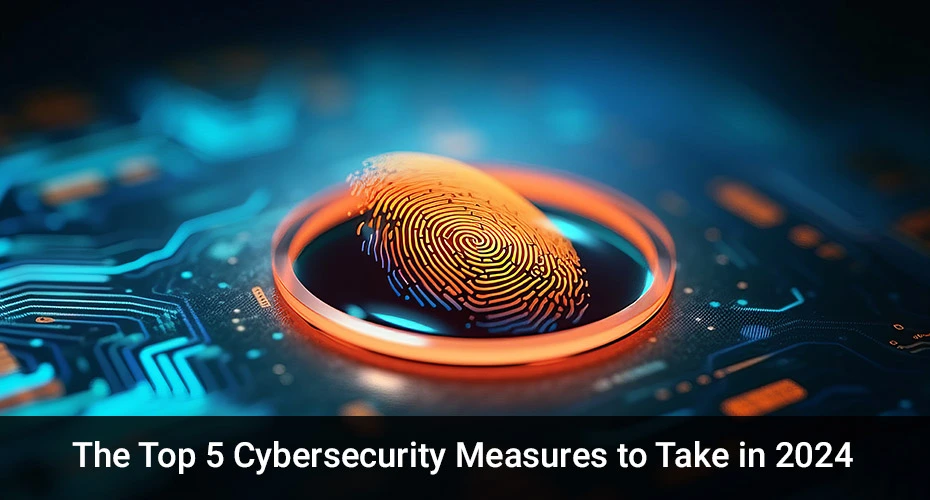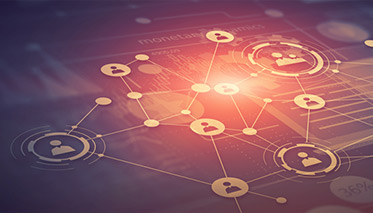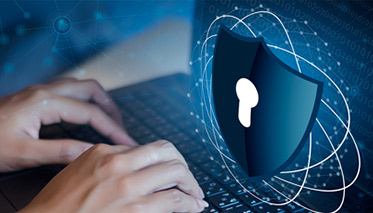February 21, 2024 - by Synoptek
As we analyze insights from 2023, it is evident that CIOs are anticipating cybersecurity to continue to be a top investment priority in 2024. Looking ahead, by the end of 2024, the expected cost of cyberattacks on the global economy is predicted to surpass a daunting $10.5 trillion.

Just like in any other aspect of business and technology, the game-changer here is artificial intelligence (AI). AI isn’t just a buzzword; it’s fundamentally altering how attacks unfold and defenses are built. In an era where attackers and scammers are becoming extremely sophisticated, staying up to date on the latest cybersecurity threats is critical.
What are Cybersecurity Measures?
Cybersecurity measures are steps taken to keep computers, networks, and data safe from hackers and other online threats. They include tools like firewalls and antivirus software, as well as best practices like controlling access to sensitive information and training employees to spot potential risks.
What Are the Types of Security Measures?
Cybersecurity measures are critical in protecting digital assets and sensitive information in today’s interconnected world. Some common cybersecurity measures include:
- Encryption
- Firewalls
- Antivirus Software
- Access Controls
- Intrusion Detection Systems
- Security Patches
- Employee Training
Essential Cybersecurity Measures
Here are the top 5 cybersecurity measures every organization must embrace in 2024 and beyond.
1. Zero Trust Architecture
One of the first concepts organizations must implement in the context of cybersecurity is Zero Trust Architecture (ZTA). The goal of ZTA is to prevent unauthorized access to sensitive data and systems, even if an attacker manages to compromise the network perimeter. As a security model, ZTA assumes all network traffic is untrusted and requires verification before accessing any resources. Therefore, all users, devices, and network traffic are treated as potential threats and subjected to stringent authentication and authorization controls.
Since ZTA is designed to be flexible and adaptable, organizations can implement security controls that best fit their specific needs. Using it with other security measures, for example, Identity and Access Management (IAM) systems, can provide a comprehensive security solution. While enabling ZTA, it is important to keep key principles in mind, including:
- Least privilege: Devices and users are only granted access to the resources necessary to perform their tasks.
- Micro-segmentation: Network traffic is segmented into small, discrete units, and access is tightly controlled.
- Continuous verification: All traffic is monitored and authenticated, even if it originates inside the network.
- Multiple layers of security: Several layers of security controls are employed, including firewalls, intrusion detection and prevention, and unified endpoint security.
The key aspect of this recommendation is understanding that ZTA is a continuous journey and not a one-time activity. In 2024, zero trust moves from a technical network security model to something adaptive and holistic, enabled by constant AI-powered real-time authentication and activity monitoring.
2. Multi-Factor Authentication
Multifactor authentication (MFA) is widely used to secure online accounts like email and financial accounts. It is also employed to control physical access to buildings and other secure areas. It makes unauthorized access to an account or system more difficult, requiring hackers to pass through multiple levels of authentication to be successful.
While enabling MFA in the coming year, organizations must be aware of the three main types of authentication factors:
- Something you know: This could be a password, a PIN, or a security question.
- Something you have: This could be a smartphone, a security token, or a smart card.
- Something you are: This could be a fingerprint, a facial recognition scan, or a
There is little to no justification for an organization to operate in 2024 without enforcing MFA everywhere. In the coming year and beyond, the integration of MFA, powered by artificial intelligence advancements, will become widespread. AI will help enhance the adaptability and responsiveness of authentication systems and solidify defenses against evolving cyber threats.
3. System User Audits
A system user audit reviews and evaluates system users (also known as “accounts”) within an organization’s IT ecosystem. It aims to ensure all system users are properly authorized and that their access is appropriate and secure.
In the coming year, organizations will witness an increased demand for comprehensive system user audits by utilizing the capabilities of artificial intelligence:
- System user accounts: List of system users to ensure that all accounts are properly authorized and that there are no unauthorized accounts.
- User roles and permissions: Roles and permissions are assigned to each user to ensure that they are appropriate and in line with job responsibilities.
- User activity: Activity of each system user to ensure they only access the resources they are authorized to access and that their activity is consistent with their job responsibilities.
- Password management: Password management policies and practices ensure that passwords are properly managed and that no weak or easily guessable passwords are used.
The results of a system user audit, infused with AI insights, will then be used to identify and address any security weaknesses or vulnerabilities. As a best practice, organizations must conduct system user audits quarterly.
4. Subject Matter Experts
In 2024, organizations must also engage with Subject Matter Experts (SMEs) who have a deep understanding and expertise in cybersecurity and Artificial Intelligence. Through cybersecurity assessment services, they can help identify and mitigate potential vulnerabilities as well as protect an organization’s systems and data from threats.
There are several ways organizations can utilize SME expertise to increase cybersecurity in the coming year:
- Identifying potential vulnerabilities: SMEs can review an organization’s systems and processes to identify potential vulnerabilities that cyber criminals could exploit. This goes beyond simple vulnerability scans and focuses on processes used by the organization.
- Developing and implementing security measures: SMEs can help develop and implement effective security measures, such as firewalls, intrusion prevention systems, and antivirus software, to protect against cyber threats.
- Providing training and education: SMEs can provide training and education to employees on identifying and preventing cyber threats. They can also educate users on how to respond if a cyberattack occurs.
- Assisting with the incident response: In the event of a cyberattack, SMEs can assist with the investigation and response efforts. This can help minimize damage and restore systems as quickly as possible.
Overall, the expertise and knowledge of SMEs along with the analytical power of AI can be an invaluable cybersecurity measure that helps organizations improve their cybersecurity posture and reduce the risk of cyber-attacks.
5. Third-Party Management Program
Navigating the complexities of infusing AI into cybersecurity can be challenging for organizations. That’s where expert Third-Party Management professionals, well-versed in AI-infused cybersecurity, become important to ensure seamless collaboration and safeguard organizational interests. These professionals can also enable ongoing monitoring and management to ensure they meet the organization’s standards at any given time.
Here are the key components that should be included in a third-party management program in the coming year:
- Risk Management Framework: The program should include a process for evaluating and assessing risks associated with working with a particular third party, including financial, legal, and reputational risks.
- Due diligence: The program should include a process for conducting due diligence on potential third parties to verify their credibility and reliability. This includes checking references, reviewing financial statements, and verifying licenses and certifications.
- Contract review and management: The program should include a process for reviewing and negotiating contracts with third parties. This ensures that they meet the organization’s standards and protect its interests.
- Ongoing monitoring: The program should also include a process for continuously monitoring third parties. This ensures that they meet their obligations and continue to comply with organization standards.
- Escalation and remediation: The program should have a process to escalate and address any issues or concerns that arise with third parties. It should also help in taking corrective action as necessary.
Overall, a good third-party management program should be comprehensive, proactive, and well-defined. It should have clear processes and procedures to ensure that the organization works with trustworthy, responsible, and reliable third parties.
Drive Cybersecurity Excellence
In the coming year(s), as the threat landscape expands, businesses must take a proactive approach to cybersecurity threats. They must become more nimble, agile, and collaborative to protect their critical assets. However, the far-reaching tentacles of cyber threats make it difficult for organizations to focus on their core business goals.
Working with cybersecurity consulting service providers like Synoptek is a great way to prevent, detect, and respond to evolving threats. Explore our SECURES maturity model to achieve effective and efficient cybersecurity within your environment. Reach out to learn about our Cybersecurity Assessment Services, which are now enriched with advanced AI capabilities ensuring enhanced data protection, business security and customer safeguarding.


